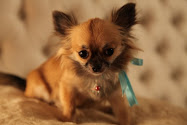






The introduction of American photographer John Rawlings to Vogue's visual team
in 1936 was certainly one of Conde Nast's best strategic moves.
At a time when opulence, pretentiousness, and theatrical lighting
were prevalent in fashion photography - fueled by the European school led
by the British Beaton, the German Horst, and the Russian Hoyningen-Huene - Nast
and Vogue's editor in chief Edna Woolman Chase decided they needed a change of direction
and placed their bets on a talented but unknown twenty-four-year Midwestener.

His beginnings were unremarkable. Born in Ohio in 1912,
John Rawlings attended the local Wesleyan University,
and upon graduation in the early 1930s he relocated to New York,
where he became a freelance store window dresser.
After buying a Leica to photograph his work and show it to potential clients,
Rawlings discovered that he enjoyed taking pictures and
eventually started to photograph some of the aristocratic clients themselves,
alone or with their dogs. A few of those shots found their way to the desk of Nast,
who decided to offer Rawlings a job at the Vogue studios as prop builder,
studio hand, and apprentice to the legendary masters Beaton and Horst.


The young Midwestener was so dedicated and worked with such unbridled enthusiasm
that four months later he not only was promoted to first assistant to the masters
but also got his first photo published in the September 15 issue of Vogue.
Impressed by his precocious talent and visual style, Nast and Chase rewarded him in 1937
with a job at the British Vogue studio in London, where he would train and work
until the early 1940s.















































